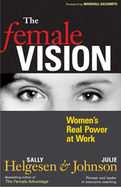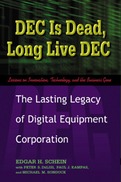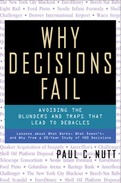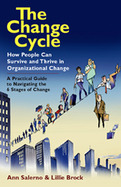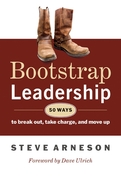2010
-
Groundbreaking new insights from the author of The Female Advantage
-
Redefines what women have to offer to the world
-
Provides a fresh and actionable perspective for organizations seeking to leverage women’s best talents
Women see the world through a distinctive lens. What they see is defined by what they notice, what they value and how they connect the dots. In this brilliant and strongly argued new book, Sally Helgesen and Julie Johnson demonstrate why the female vision constitutes women’s most powerful asset in the workplace and show how women and organizations can use it to strong advantage.
The authors describe the three elements of the female vision and explore the specific benefits that each provides. Women’s capacity for broad-spectrum notice widens the scope of information available to organizations and provides vital clues about relationships, shifting markets and potential conflicts. Women’s focus on the quality of day-to-day experience rather than abstract measures of achievement provides a way to restore balance to a 24/7 workplace in which endemic stress has become routine. Women’s penchant for viewing work in a larger social context offers a powerful means for moving beyond sterile game metaphors to engage motivation at a profound and authentic level.
The extraordinary power of the female vision has been overlooked because it is countercultural in most organizations and because its benefits have been difficult to measure. But as Helgesen and Johnson make clear, the advent of a team-based, service-oriented interconnected global business environment that seeks customized markets and must stir the passions of highly diverse employees requires precisely the skills that the female vision encompasses. The potential pay off to organizations in terms of creativity, strategic insight and the ability to engage and inspire diverse talents is undeniable.
Drawing on multiple veins of research, including their own Satisfaction Profile survey, the authors offer a totally fresh and even startling perspective on the true value that women bring to work. The Female Vision lays out exactly what companies must do to engage, energize and support talented women, and shows women how to nurture and sustain this power.
Edgar Schein consulted to DEC throughout its history and so had unparalleled access to all the major players, and an inside view of all the major events. He shows how the unique organizational culture established by DEC's founder, Ken Olsen, gave the company important competitive advantages in its early years, but later became a hindrance and ultimately led to the company's downfall. Schein, Kampas, DeLisi, and Sonduck explain in detail how a particular culture can become so embedded that an organization is unable to adapt to changing circumstances even though it sees the need very clearly.
The essential elements of DEC's culture are still visible in many other organizations today, and most former employees are so positive about their days at DEC that they attempt to reproduce its culture in their current work situations. In the era of post-dot.com meltdown, raging debate about companies "built to last" vs. "built to sell," and more entrepreneurial startups than ever, the rise and fall of DEC is the ultimate case study.
• Edgar Schein is one of the founders of the organization development field, a widely respected scholar and a bestselling author
• Shows how the unique culture of DEC was responsible both for its early rise and for its ultimate downfall-a real-life classical tragedy
• Schein was a high-level consultant to DEC throughout its history, with unparalleled access to the company's story as it unfolded over the course of four decades
DEC Is Dead, Long Live DEC tells the 40-year story of the creation, demise, and enduring legacy of one of the pioneering companies of the computer age. Digital Equipment Corporation created the minicomputer, networking, the concept of distributed computing, speech recognition, and other major innovations. It was the number two computer maker behind IBM. Yet it ultimately failed as a business and was sold to Compaq Corporation. What happened?
Edgar Schein consulted to DEC throughout its history and so had unparalleled access to all the major players, and an inside view of all the major events. He shows how the unique organizational culture established by DEC's founder, Ken Olsen, gave the company important competitive advantages in its early years, but later became a hindrance and ultimately led to the company's downfall. Schein, Kampas, DeLisi, and Sonduck explain in detail how a particular culture can become so embedded that an organization is unable to adapt to changing circumstances even though it sees the need very clearly.
The essential elements of DEC's culture are still visible in many other organizations today, and most former employees are so positive about their days at DEC that they attempt to reproduce its culture in their current work situations. In the era of post-dot.com meltdown, raging debate about companies "built to last" vs. "built to sell," and more entrepreneurial startups than ever, the rise and fall of DEC is the ultimate case study.
2002
Why Decisions Fail translates decades of award-winning research into practical terms that managers can use to improve their own decision-making practices.
- Tells the stories behind the stories of such famous debacles as EuroDisney, Barings Bank, Ford Pinto, the Waco siege, and the Challenger tragedy
- Shows how to avoid the most common blunders and traps that lead to disaster
- Offers lessons about what works, what doesn't, and why from a twenty-year study of 400 decisions
- Speaks to managers by dealing with decisions that they must confront on a daily basis
2008
2010
- Arneson was named one of America’s top leadership consultants by Leadership Excellence magazine in 2008
- Enables leaders at all levels to design a complete self-directed leadership development program
- Concise, accessible, practical and flexible
Leadership training can be inconsistent in the best of times. In tough economic times it’s often one of the first things that even the most progressive companies cut back on. And you can’t necessarily depend on finding that mentor you’ve been looking for either. Now more than ever, if you’re going to advance your career you need to lift yourself up by your own bootstraps. But not entirely: Steve Arneson is here to give you a boost.
In Bootstrap Leadership Arneson, one of America’s top leadership coaches, offers a complete blueprint for designing your own personal leadership development program. In fifty brief, to-the-point chapters he provides practical ideas and techniques that have been proven successful in his work with executives at Fortune 500 companies like AOL, PepsiCo and Capital One. Surprisingly, most of these ideas cost nothing to implement, nor do they require any elaborate equipment or infrastructure—they’re open to anyone with sufficient initiative, drive and ambition.
The chapters are entirely self-contained and can be read in any order and at any pace. You can read one a week and you’ll have a comprehensive year-long self-improvement program (with two weeks off for vacation). Or you can choose a chapter that speaks to a particular challenge you’re facing at work or one that just seems intriguing. There’s a self-assessment at the beginning of the book to suggest specific chapters that fit your developmental needs.
No one is going to just hand that next promotion. You have to earn it by developing and demonstrating your leadership skills. And ultimately it’s not just about you—true leaders make everyone around them better. Bootstrap Leadership shows you how.
2004
- By the bestselling author of Awakening Corporate Soul (more than 60,000 copies sold)
- Inspires readers to reclaim their idealism and find their sense of wonder again --- without surrendering their critical faculties
- Full of witty and compelling real-life stories


